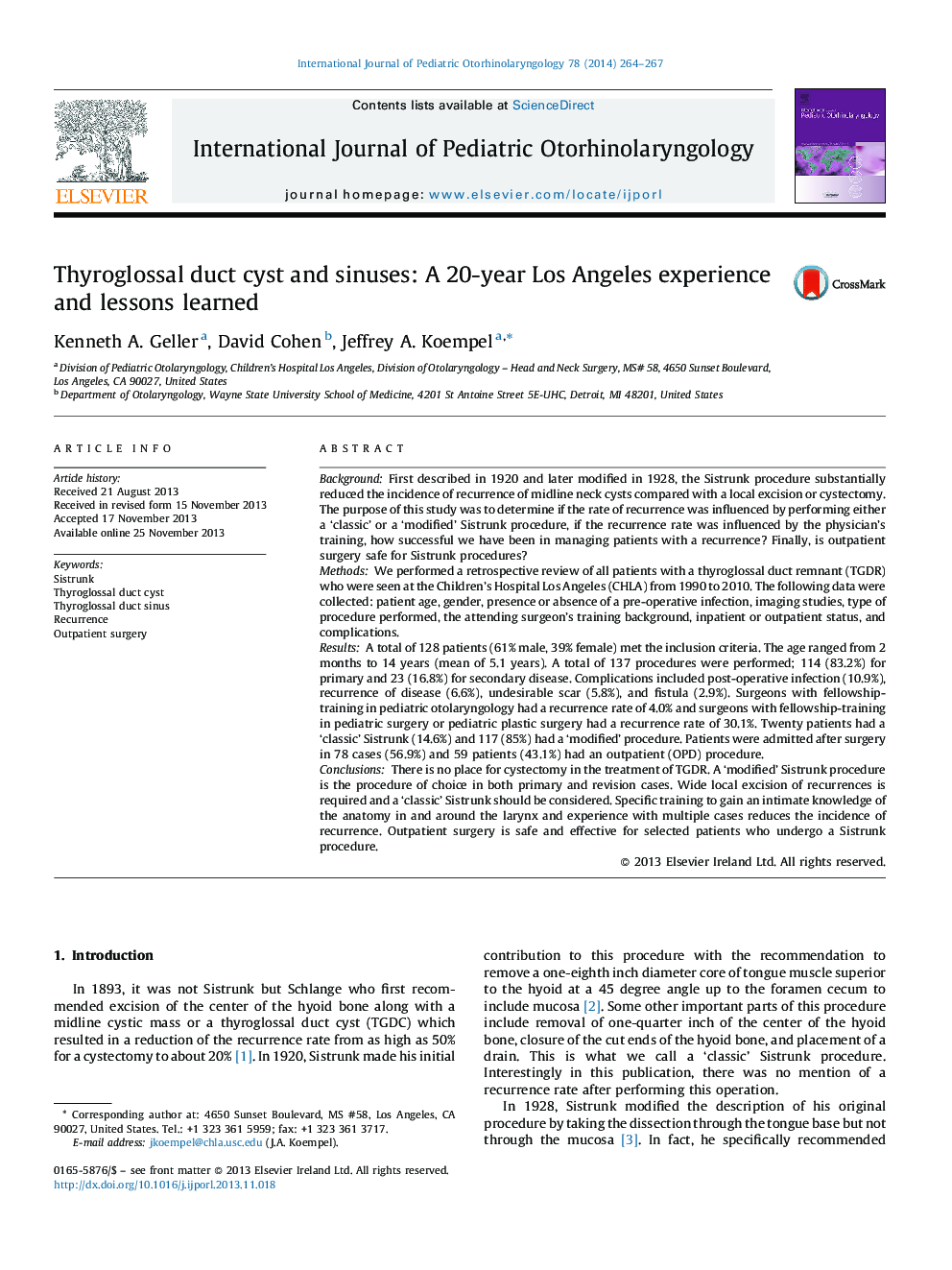| Article ID | Journal | Published Year | Pages | File Type |
|---|---|---|---|---|
| 6213820 | International Journal of Pediatric Otorhinolaryngology | 2014 | 4 Pages |
BackgroundFirst described in 1920 and later modified in 1928, the Sistrunk procedure substantially reduced the incidence of recurrence of midline neck cysts compared with a local excision or cystectomy. The purpose of this study was to determine if the rate of recurrence was influenced by performing either a 'classic' or a 'modified' Sistrunk procedure, if the recurrence rate was influenced by the physician's training, how successful we have been in managing patients with a recurrence? Finally, is outpatient surgery safe for Sistrunk procedures?MethodsWe performed a retrospective review of all patients with a thyroglossal duct remnant (TGDR) who were seen at the Children's Hospital Los Angeles (CHLA) from 1990 to 2010. The following data were collected: patient age, gender, presence or absence of a pre-operative infection, imaging studies, type of procedure performed, the attending surgeon's training background, inpatient or outpatient status, and complications.ResultsA total of 128 patients (61% male, 39% female) met the inclusion criteria. The age ranged from 2 months to 14 years (mean of 5.1 years). A total of 137 procedures were performed; 114 (83.2%) for primary and 23 (16.8%) for secondary disease. Complications included post-operative infection (10.9%), recurrence of disease (6.6%), undesirable scar (5.8%), and fistula (2.9%). Surgeons with fellowship-training in pediatric otolaryngology had a recurrence rate of 4.0% and surgeons with fellowship-training in pediatric surgery or pediatric plastic surgery had a recurrence rate of 30.1%. Twenty patients had a 'classic' Sistrunk (14.6%) and 117 (85%) had a 'modified' procedure. Patients were admitted after surgery in 78 cases (56.9%) and 59 patients (43.1%) had an outpatient (OPD) procedure.ConclusionsThere is no place for cystectomy in the treatment of TGDR. A 'modified' Sistrunk procedure is the procedure of choice in both primary and revision cases. Wide local excision of recurrences is required and a 'classic' Sistrunk should be considered. Specific training to gain an intimate knowledge of the anatomy in and around the larynx and experience with multiple cases reduces the incidence of recurrence. Outpatient surgery is safe and effective for selected patients who undergo a Sistrunk procedure.
